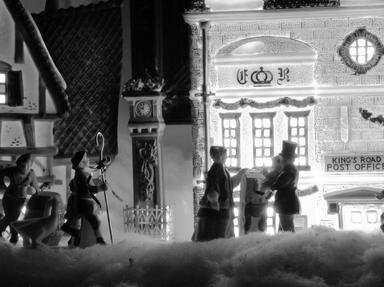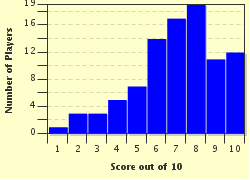Quiz Answer Key and Fun Facts
1. The character Oliver Twist was born in the parish workhouse, where his mother died shortly after his birth. The man in charge of the workhouse was a cruel and greedy character, and was the man responsible for giving Oliver his name. Who was this cold and cruel man?
2. When Oliver first left the workhouse where he was born and brought up, the Board of that institution sent him on his way, so it wouldn't have the expense (a pittance, naturally) of supporting him. Thus he was made an apprentice, but to which man?
3. When Oliver ran away to London, he was in a most distressed state upon his arrival there. He was almost starved, he had no money at all, and no place to stay. Who was the first person who befriended him?
4. The Artful Dodger, aka Jack Dawkins, worked for a criminal called Fagin, a most infamous old fellow. Oliver was brought to Fagin's house, and at first he believed he had landed among friends. But soon Fagin expected Oliver, like all the other boys, to commit crimes to earn his keep. What was Fagin's eventual fate in the novel?
5. This character was the "benevolent angel" who came to Oliver's rescue more than once, and whose story was inextricably entangled with the story of Oliver's wicked half-brother. S/he adopted Oliver in the course of the story. Who was this character?
6. There was a minor character in the novel, who was one of the thieves-in-training at Fagin's house. This character was virtually always accompanied by the Artful Dodger, and the boy's name was Charlie Bates. Dickens often referred to him by a certain rather strange title. What is Charlie's frequently mentioned title?
7. Oliver was warned in the nick of time and managed to escape his tormentor, the violent Bill Sikes. Thus he was reunited with Rose Maylie and together they found Mr. Brownlow. Which character warned Oliver to get away, before Sikes caught up with him?
8. Mr. Bumble, the parish beadle, was awarded a suitable fate at the end of 'Oliver Twist". So, what was Mr. Bumble's situation at the end of the novel?
9. Charles Dickens was born in Portsmouth, England, in 1812. He died in 1870, at the relatively young age of fifty-eight. "Oliver Twist" was published, like most of his novels, by monthly numbers over a twenty-month period. In what year did the first number of "Oliver Twist" appear before the general public?
10. Dickens gave readings from some scenes of his works to the general public in Britain and in America, during some of the last years of his life. Which scene from "Oliver Twist" did Dickens read from on numerous occasions?
Source: Author
elmo7
This quiz was reviewed by FunTrivia editor
MotherGoose before going online.
Any errors found in FunTrivia content are routinely corrected through our feedback system.

